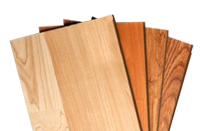Why Mango Wood is the Sustainable Choice for Furniture!
Background
There is now no denying the challenges that the climate emergency are setting for all of us. So when deciding which kinds of wood to grow, harvest and use for our furniture the sustainability question comes very close to the top of the tree, if you’ll pardon the pun. From the consumer’s perspective when we think about green lifestyles, we usually turn to our meat consumption, how local our food is sourced, and our travelling and fuel consumption, not forgetting of course, good old recycling. We just love washing out those marmite jars. And yet how many of us take a moment to consider the sustainability of our furniture? Perhaps not enough.
Despite the fact that as individual consumers we could all make more informed ethical choices – and that would help – there is no denying that the furniture industry could have done a whole lot more to help present those choices with greater clarity. Hence the importance of articles like these, which present mango wood as the sustainable wood of choice.
Why mango wood?
First things first, mango wood is an excellent material for making strong, durable and highly attractive pieces to stay with purchases through many years of use. Because mango wood is a densely grained softer hardwood it has great strength, but is also very malleable so it is less labour intensive to work, reducing costs and further reducing carbon footprint of each piece created.
Mango trees are grown in many countries across three different continents, namely Australia, Asia and South America. This means there is not specific pressure applied to one or two countries who have the capacity to grow the trees, which is very important. It also means that countries around the world have different sources that are nearer and farther away, so there is the option to reduce the carbon footprint of the material by opting for a supplier nearer to the material’s final destination. On top of this, and arguably the most important aspect of mango wood as a sustainable material, is the fact that it is essentially a by-product of the growth and harvesting of mango fruit. Of course, when you are picking mangoes, you don’t necessarily chop down the tree after picking, but unlike large oaks which take between fifty and one hundred years to reach maturity, mangoes get to around one hundred feet in fifteen years! This enables growers to chop down the trees that get too large to harvest fruit easily, or become less fecund for timber and in their place new trees are planted. Because of its rapid maturation the mango tree when felled is incredibly easy to replace, demanding far fewer resources and less looking after than comparable hardwoods. When mango trees get to their full height it is particularly tricky to harvest the fruit and mango trees also have a limited lifespan for producing the very best mangoes, so using such trees for timber is incredibly sensible.
The process of selling the Mango Wood is beneficial for the fruit farmers, as in years gone by, the wood would be burnt, while now, it generates profit and in turn reduces air pollution. This makes for an industry that is not only highly sustainable but also provides extra income to farmers in less wealthy countries.
Durability and maintenance of mango wood
Despite being one of the softer hardwoods, mango wood is exceptionally durable when used in furniture making. It is categorized as a hardwood because I is strong, dense and durable. It will not wear easily and maintains a high lustre for a good number of years. While mango wood has a good grain density, making it strong, it’s softness in comparison to harder hardwoods means that it is easy on the tools used in its transformation into furniture. Less wear on tools, means less new tools, which further enhances its environmental profile.
The flexibility angle
Mango wood benefits from a lustre that makes it incredibly flexible when it comes to staining or painting pre-market or later on. This means that older mango wood pieces would be perfect candidates for upcycling and the creation of distressed, shabby chic style pieces. Mango wood furniture can therefore have several life cycles. Mango wood lends itself to lighter painted finishes or stains from limewash through to whitewash, which fits in perfectly with the number one trend for upcycled furniture.
There are very few limitations of mango wood
Any wood has its limitations, but fortunately in the furniture business we don’t have any issues whatsoever. What holds mango wood back in other sectors, is actually one of its benefits in the furniture world. Remember when we mentioned its relative softness for a hardwood and how this makes it easier to work with? Well that same characteristic prevents it from being suitable for construction or wooden flooring.
Conclusion
As you can see, there is so much to be said for mango wood becoming the sustainable choice for furniture making – and furthermore it is a stunningly beautiful wood that will bring great happiness to owners of pieces the world over.


